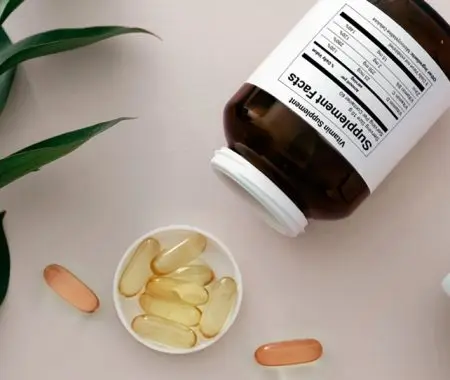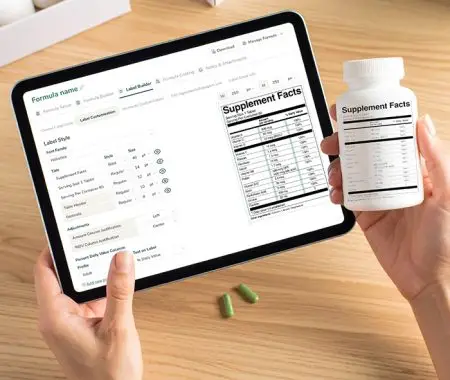In today’s age, consumers are heavily influenced by the health benefits of certain food or products they wish to purchase. Food and dietary supplement labels feature various types of claims, including health claims, nutrient content claims, and functional claims that suggest they can offer the benefits that a consumer is searching for. However, these claims need to be defined by the regulations that the Food and Drug Administration (FDA) prescribes. Not only does it ensure accurate information for consumers, but some of these claims may help individuals make informed decisions based on their specific health needs.
This article will have a particular focus on the notion of health claims and guide you through the comprehensive nature of health claims in relation to FDA rules and regulations. It will also educate you on how to make a health claim for your food product and equip you with the relevant knowledge going forward so that you avoid any penalization while offering informative information to your customer base.
What is a Health Claim?
A health claim, which is usually stipulated by a manufacturer of a food label or supplement, is a claim that a certain food will reduce the risk of developing a disease or health condition. Examples of these health conditions could be that the supplement or food product reduces cancer, that is it sugar-free, or that it could cause high blood pressure.
These claims need to be reviewed by the FDA and must be advocated by in-depth research and scientific evidence. The FDA specifically states that Health claims:
- must contain both the elements of a substance or food product and the disease or certain condition that would be caused by it
- must have exceptions and limitations as to the claims they are allowed to state about disease risk reduction
- cannot claim to diagnose, treat or cure a certain disease, as this should be left to qualified healthcare professionals to state
- are required to undergo a review and evaluation process by the FDA before the use of the supplement or food product
The necessity for FDA regulation ensures that health claims are accurate and not misleading to those wanting to use that particular product. It is important for manufacturers and food producers to adhere to the rules of health claims so as not to face any legal ramifications down the line. The FDA, like any food manufacturer, wants to preserve public safety, so it is important that you do too.
Qualified Health Claims
A qualified health claim, like a general health claim, is a claim on a food label that suggests that a food or supplement will provide a certain health benefit or reduce the risk of developing a disease or condition. However, qualified health claims are different from approved health claims because the scientific evidence supporting them is not yet conclusive.
Food manufacturers are also able to send a petition to the FDA and ask if they would consider not penalizing them for the use of a qualified health claim. In simple terms, food manufacturers have the option to ask the FDA to be lenient in enforcing certain qualified health claims. The FDA doesn’t technically “approve” these requests but instead considers them and a health claim of this nature must also be accompanied by a disclaimer so that the consumer understands that this particular health claim may not apply to everyone.
If a request has strong scientific evidence to support it, the FDA may issue a letter saying they won’t object to using the qualified health claim. The letter will include specific wording for the claim, reflecting the level of evidence and the FDA’s decision not to object to it. This process doesn’t involve making official rules, but it is a way for manufacturers to seek flexibility in using certain health claims based on the evidence available. Another one of the FDA’s reasoning behind this is to encourage further research on the potential health benefits that are associated with a certain food or ingredient.
See How FoodLabelMaker Can Help You
Do You Need To Make A Health Claim?
Health claims must be disclosed on food products and packaging so that manufacturers can avoid legal ramifications from the FDA. But on a more holistic level, it is important for consumers to know what role food plays in their daily diet. This allows them to be better equipped and have more knowledge on how food might cause specific diseases or conditions.
When To Make A Health Claim
Health claims about a food product can be made when there is enough scientific evidence to support a correlation between the food and a health benefit or condition. Here are some scenarios where you can make a health claim:
- Authorized Health Claims: The FDA has approved certain health claims based on strong scientific evidence. If your product meets the criteria outlined by the FDA for an authorized health claim, you can make that specific claim. Examples include claims about the relationship between calcium intake and osteoporosis risk reduction.
- Qualified Health Claims: A qualified health claim can be made if the scientific evidence that is presented is not good enough to suggest a potential health benefit. This rejection of a health claim is made by the FDA according to their regulations.
- Emerging Science: In some instances, where there is preliminary scientific research indicating a potential health benefit, you can make a claim as long as it is accompanied by appropriate language stating that the claim is based on emerging science and not yet conclusive.
- Nutrient Content Claims: Nutrient content claims describe the level of a nutrient or substance in a food product. Terms such as “low fat” or “high in fiber” signal this claim and must meet specific FDA criteria related to the amount of the nutrient present.
When Not To Make A Health Claim
A health claim does not need to be made if:
- The claim is false, inaccurate or misleading to a consumer
- The claim is not substantiated by relevant scientific information that will be approved by the FDA
- The food product is high in fat, saturated fat, trans fat, sugar or salt (HFSS)
For example, a food product claiming to be sugar-free contains artificial sweeteners and components with little to no nutritional value for a consumer. This would ultimately be classified as misinformation or misleading to a consumer who might choose this food product thinking it would be “healthier” due to the lack of sugar in it.
Similarly, items with the claim “reduced fat” might have a much higher carbohydrate or sugar component in their nutritional label. This is another reason why it is so important to educate yourself on the food that you are producing and be aware of the nutritional components that are found in them.
Elements of a Health Claim
Health claims are made up of four components:
- The Overall Health Claim Statement
This must be backed up by scientific evidence and be worded appropriately.
- A Substance
This is the ingredient the claim is referring to, and it must include accurate values.
- A Disclaimer
This serves as a warning or informant of the health claim, especially when referring to a qualified health claim.
- Disease or Health-Related Condition
This is the particular disease or circumstance with which the substance will affect overall health.
How To Write A Health Claim Step-By-Step
Writing a health claim requires careful consideration and must adhere to stipulated FDA regulations.
Here are 8 steps to help you write a health claim effectively:
Step 1: Identify the Claim
Start by finding your claim and then gather the necessary scientific evidence that will support the claim you would like to make and the health condition that would accompany it. Ensure that the evidence is reliable, relevant, and formulated on well-researched studies.
Step 2: Review FDA Guidelines
Familiarize yourself with the FDA’s guidelines on how to accurately write health claims and what products or ingredients need to have claims or disclaimers. The relevant information can be found on the Food and Drug Administration website.
Step 3: Craft Your Claim Statement
Write a clear and concise statement that outlines the food or supplement you have manufactured and the specific health condition or disease that is related to it. Use grammatically correct sentences and language, and avoid making false claims or exaggerations.
Step 4: Include Qualifying Language
Depending on the strength of the scientific evidence supporting the claim, you may need to include qualifying language or disclaimers. These statements should accurately communicate the level of certainty or limitation associated with the claim.
Step 5: Seek Legal or Regulatory Advice
Consider consulting with a legal professional who specializes in FDA regulations if you are unsure of whether your claim might be incorrect or misleading to a consumer reading the claim. They will provide guidance specific to your situation and can guide you through any missing requirements.
Step 6: Submit the Claim to the FDA
If your health claim is complete and meets the necessary criteria, you can submit it to the FDA for review. Follow the FDA’s submission process and provide all required documentation, including any supporting scientific evidence you may have collected.
Step 7: Await Your FDA Evaluation
The FDA will review your health claim submission as well as evaluate the scientific evidence provided. Remember that this evaluation process may take time, and you should be prepared to address any additional information or questions from the FDA, if necessary.
Step 8: Obtain FDA Approval
If the FDA approves your health claim, it can then be used in your food product labeling.
It’s essential to note that these steps provide a general framework, but there might be more specific requirements, and processes may vary depending on the nature of your health claim as well as the FDA’s current regulations.
Health Claim Examples
An example of a health claim is: “Omega-3 fatty acids may reduce the risk of coronary heart disease.”
This example clearly shows a substance = Omega-3 fatty acids
And a Disease or Health-Related Condition = coronary heart disease
The claim is stating to a consumer that the consumption of Omega-3 fatty acids can reduce or mitigate the chances of you developing heart disease in the future. The term “may” is also a disclaimer that manufacturers have to make, as there can never be a guarantee that this food product will improve your heart health. The scientific evidence has simply proven that, in most cases, it will improve heart disease, but it is not 100% proven.
An example of a qualified health claim, on the other hand, states that: “Consuming green tea may reduce the risk of breast or prostate cancer. However, FDA does not agree that there is significant scientific evidence to support this claim.”
This clearly shows how the FDA can deem that there is only some scientific evidence to support the claim, and this will be stated in the claim itself. This highlights the necessity for manufacturers to ensure that your health claim is in compliance with FDA regulations before using it in product labeling or advertising.
Get Help With Your Health Claims
Food Label Maker provides valuable software that can greatly assist you in writing and creating health claims for food products. With its user-friendly interface and comprehensive features, Food Label Maker simplifies processes and ensures compliance with FDA standards and regulations.
Food Label Maker’s software also takes into account the nutrient profile of the product being labeled. By considering the recipe information inputted by the user, it ensures that the health claims are accurately aligned with the product’s nutritional content, preventing any misleading information. This not only saves time and effort but it empowers food manufacturers to effectively communicate the health benefits of their products while maintaining regulatory compliance.



